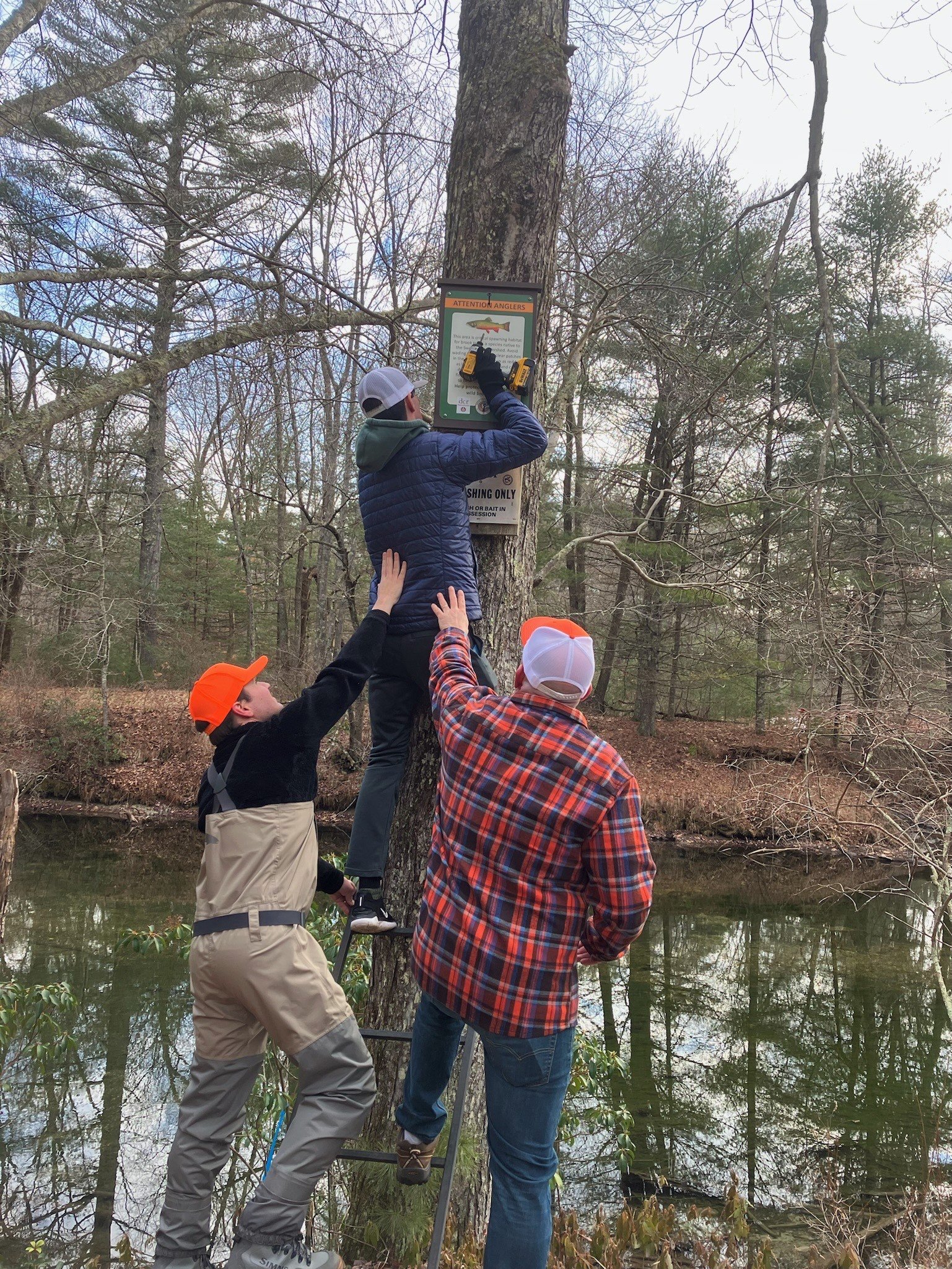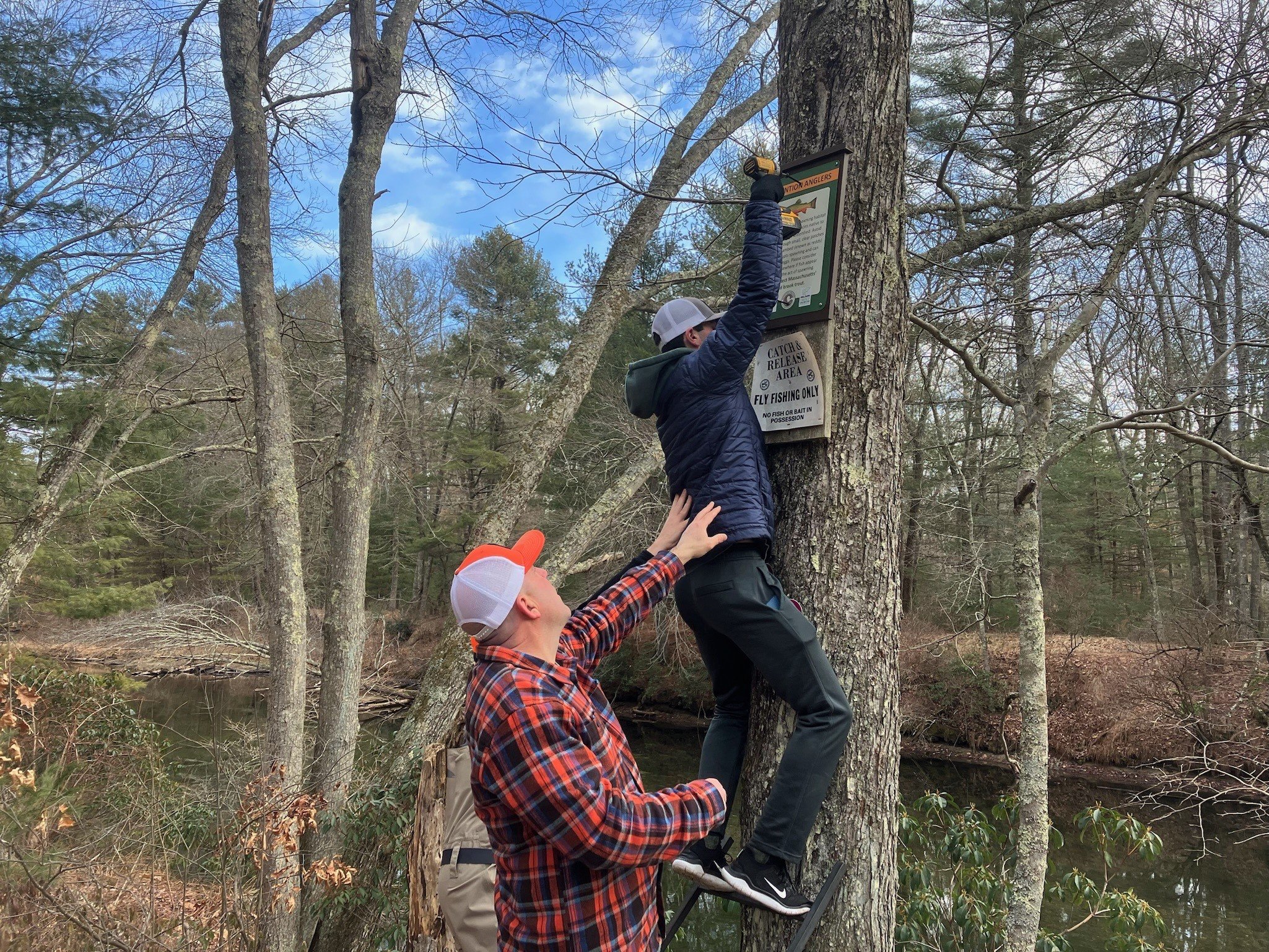Swift River in Massachusetts Gets Brook Trout Redd Signs
Massachusetts NFC has posted informational signs pertaining to the presence of wild brook trout redds on the Swift River above Route 9. This marks the culmination of a project we have talked about for a year or so, and others have talked about for longer than that.
To be clear, the Swift River below Quabbin Reservoir is arguably the most manipulated aquatic habitat in Massachusetts. A tailwater in the true sense of the word, the river runs cool, in the 50’s, year-round with relatively stable flows and gin-clear water. It is also heavily stocked with nonnative rainbow trout.
What did and did not live in this section of river before the construction of Windsor Dam is unclear, and will likely never be known. What we do know however is that the Swift River watershed was historically home to wild native brook trout, and still is today.
A large wild brook trout from the upper Swift River below Quabbin Reservoir.
We also know that the Swift River downstream of Quabbin Reservoir is home to the finest wild brook trout fishery in the state, bar none. Schools of small wild brook trout can be found throughout the upper river, and large fish up to 18” are always possible.
The Swift River is also the most popular fishery in Massachusetts, and along with the Farmington River in Connecticut, arguably the most popular in New England. As a tailwater, it is fishable year-round, and sees at least some level of angling pressure most days.
Late in the fall, adult wild brook trout leave their downstream haunts and move into the Swift River above Route 9 to spawn. They leave behind small clear patches in the streambed known as redds. These redds contain brook trout eggs which hatch in the spring, likely late March. Small brook trout fry hang around for another month or so before disbursing.
A juvenile wild brook trout from the Swift River.
MA NFC worked with Massachusetts Department of Conservation & Recreation and Pioneer Valley Trout Unlimited to develop these informational signs. These signs will help protect wild brook trout, inform both anglers and non-anglers as to their presence, and further promote the wild native fish message.

















